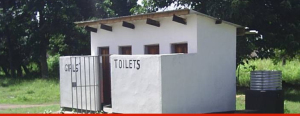When Save the Children launched its School Health and Nutrition (SHN) program in Mangochi, Malawi in 1998, only 42 percent of schools had access to clean water and none had hand-washing facilities. Only 54 percent of schools had separate facilities for girls. In 2003, when Save the Children expanded its SHN program in Malawi to Balaka district, the situation was a marginally better than it had been in Mangochi five years before and as in Mangochi, no schools in Balaka had hand-washing facilities.
Published on: 28/05/2009
Qualitative surveys conducted in both districts also showed that before Save the Children’s SHN program:
To increase access to and use of safe water and sanitation facilities, Save the Children worked with communities, schools, and water and sanitation experts to construct and rehabilitate boreholes, latrines, and hand-washing facilities and to train teachers and communities on hygiene.

Quantitative and qualitative end line surveys conducted in Balaka and Mangochi district in 2006 and 2007 respectively showed that the presence of adequate water and sanitation facilities have had a tremendous impact on children’s lives and communities.
Despite these important achievements, the project encountered a number of challenges:
While Save the Children’s SHN program saw tremendous progress in improving access to safe water and adequate latrines, hand-washing remained a low priority for schools and communities. Hand-washing facilities are not maintained and children rarely wash their hands with soap or ash. A targeted campaign around the importance of hand-washing is needed. Save the Children’s experience in Mangochi and Balaka districts illustrate the importance of community participation and ownership along with regular supervision. [...] After approximately 20 years of programming and ten years supporting School Health and Nutrition in the district, Save the Children is phasing its programs out of Mangochi. Malawi’s Ministry of Education adopted most of Save the Children’s School Health and Nutrition activities when it began a nation SHN program in 2007. Unfortunately, the provision of water and sanitation facilities is expensive and the government will probably not be able to bare the full cost to equip all schools with adequate facilities.
Source: Save the Children (2008). Improving water, sanitation, and hygiene behaviors in schools : successes and lessons learned from Mangochi District, Malawi. 4 p.
At IRC we have strong opinions and we value honest and frank discussion, so you won't be surprised to hear that not all the opinions on this site represent our official policy.